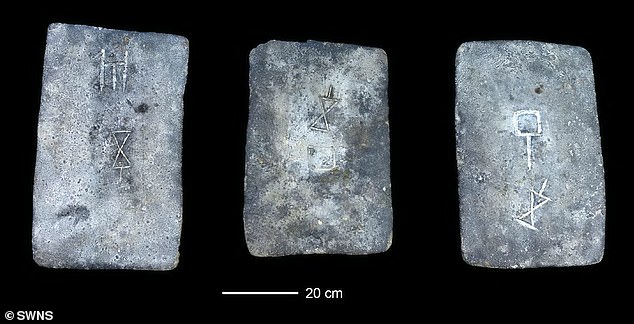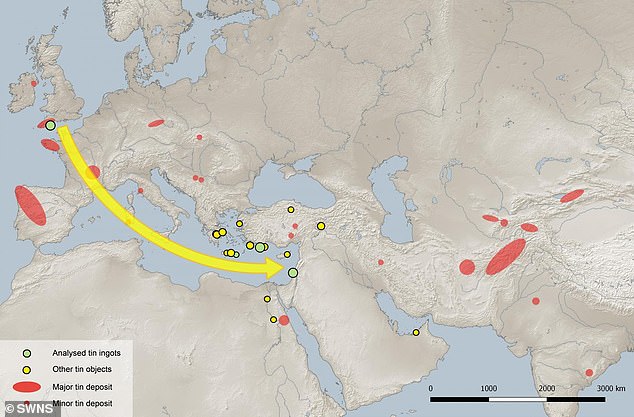How Britannia ruled the waves in the Bronze Age: 3,000-year-old tin ingots from Devon and Cornwall found in Israel reveal island’s ancient trade routes dating back to 1,300 BC
- Scientists have discovered 3000-year-old tin in Israel was made in Cornwall
- The Bronze Age samples prove the existence of maritime trade around 1,300 BC
- Tin and copper were highly prized materials that drove the trade development
New evidence has surfaced suggesting that the British Isles had developed maritime trade routes with the rest of the world as early as the Bronze Age.
Researchers at Heidelburg University in Germany have discovered that 3000-year-old tin ingots found in Israel are actually from Cornwall and Devon.
The ingots, which date back to around 1,300 BC, were also found at archaeological sites in Turkey and Greece.
The findings are proof that complex and far-reaching trade routes must have existed between Europe and the Eastern Mediterranean as far back as the Bronze Age.

Some of the studied tin ingots from the sea off the coast of Israel, dated to approximately 1300-1200 BCE
Raw materials like tin as well as amber, glass, and copper were highly appreciated and the driving forces of this early international trade network.
Dr Ernst Pernicka, a retired professor from Heidelberg University, said: ‘Bronze was used to make weapons, jewellery, and all types of daily objects, justifiably bequeathing its name to an entire epoch.
‘The origin of tin has long been an enigma in archaeological research. Tin objects and deposits are rare in Europe and Asia.’
‘The Eastern Mediterranean region, where some of the objects we studied originated, had practically none of its own deposits, so the raw material in this region must have been imported.’

A map of the Eurasian continent, which shows the significantly low dispersal of tin deposits in the area the ingots were found in
Metals traded in block form, such as tin ingots, are particularly valuable for researchers because they can target questions of their origin more specifically.
Scientists solved the puzzle by examining the objects, analysing the make-up of lead and tin as well as small amounts of trace elements.
This allowed them to verify that ingots largely matched sample tin from Cornwall and Devon.
Dr Daniel Berger, a researcher at the Curt Engelhorn Centre for Archaeometry in Germany who also conducted the study, said the findings give rise to new insights for future research.
He said: ‘These results specifically identify the origin of tin metal for the first time and therefore give rise to new insights and questions for archaeological research.’
